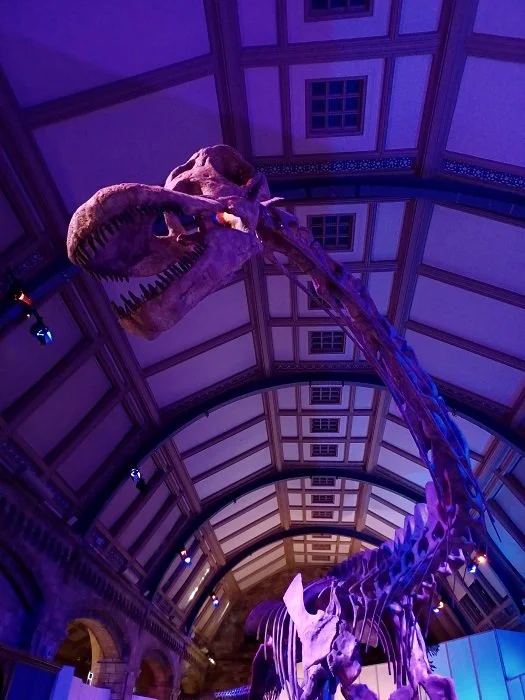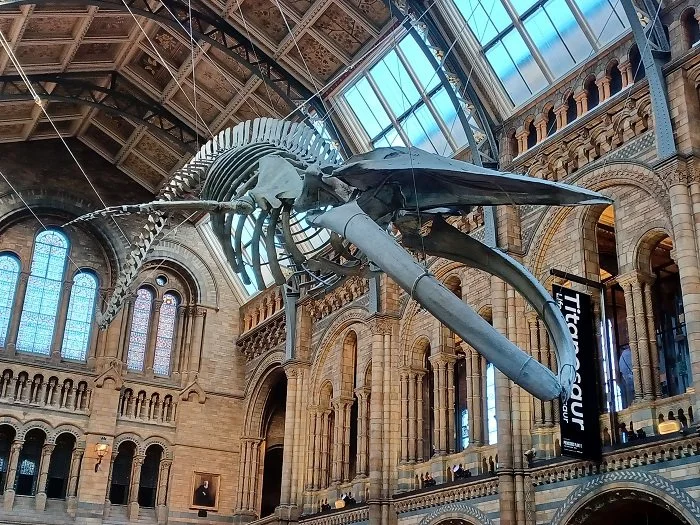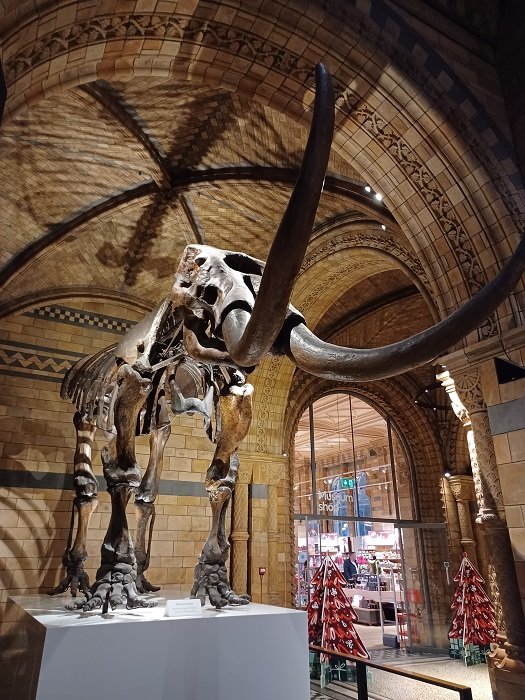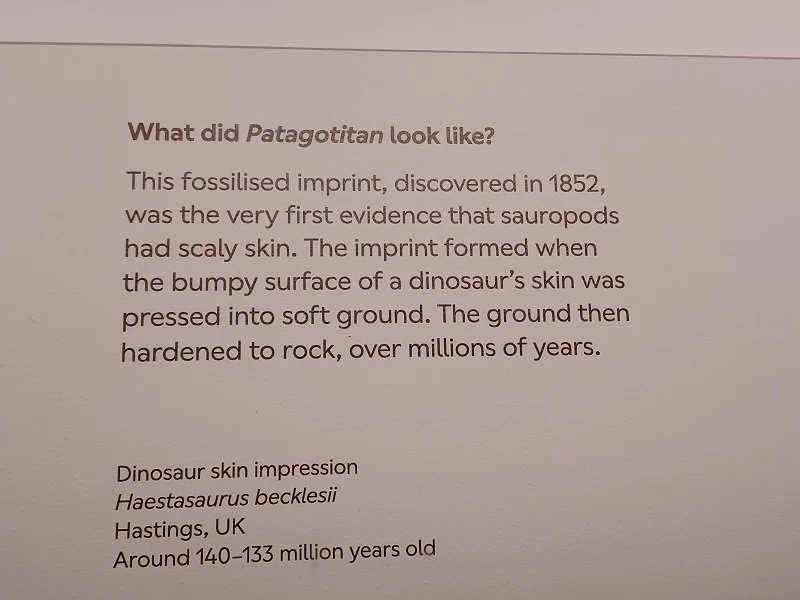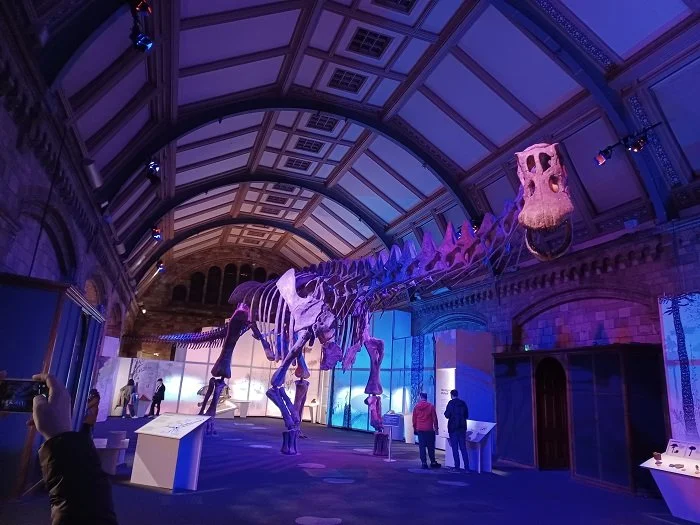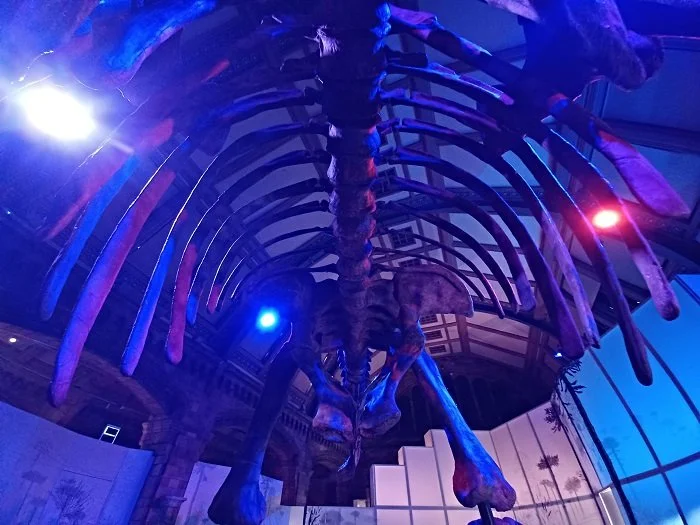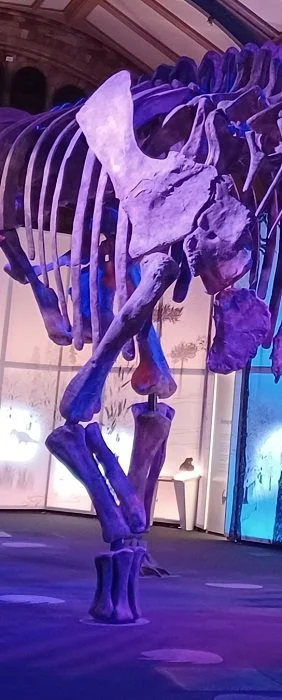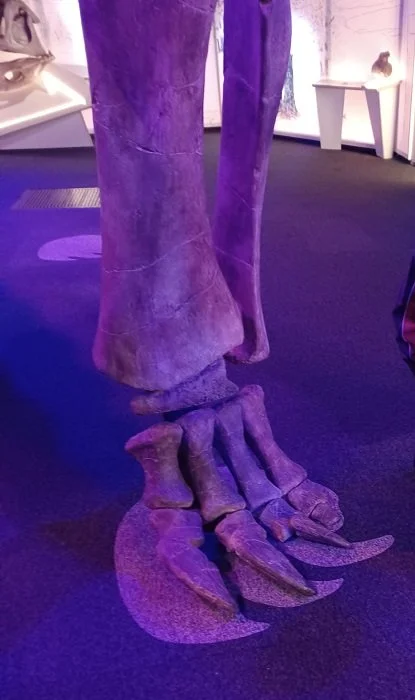Natural History Museum Exhibition - Titanosaur: Life As The Biggest Dinosaur
Reconstructed skeleton of Patagotitan at the Natural History Museum
It’s been quite a few years since we’ve been to the Natural History Museum, the one place in London we’d visit on an almost monthly basis back in our homeschooling days.
The thing that finally got us to go again is a dinosaur exhibition that’s on until the 14th of January 2024.
We’d planned on going earlier, but between trying to book days off and the never-ending train strikes, it never quite came together.
Until last week.
Not that our journey was straightforward – an earlier breakdown along the line meant trains were still running late and we got into London an hour later than planned, and a fault on a line somewhere meant our return journey also suffered delays.
But at least we did make it to the museum.
At the entrance to the Natural History Museum
Blue whale in the front hall
Stained glass windows by the staircase opposite the entrance in the main hall
Mastodon in the front hall
The star of the exhibition – ‘Titanosaur: Life as the Biggest Dinosaur’ – is the Patagotitan, a sauropod.
The Patagotitan lived around 101 million years ago, in the early Cretaceous, weighing between 50-57 tonnes (between 110,000lbs – 126,000lbs), and measuring, nose to tail, about 31m (just over 100ft).
The femur (thigh bone) of the Patagotitan, 2.38m long (7.8ft)
(Information re: the femur)
The fossils were found in Patagonia in 2010, at La Flecha Ranch, when a farmer came across a huge bone poking out of the ground.
Digs took place in 2012, 2013, and 2015, during which palaeontologists unearthed hundreds of fossil bones, and 6 partial skeletons, which had been buried there during floods.
The species was named Patagotitan mayorum in recognition of the owners of the ranch, the Mayo family, who had been understanding and welcoming during the excavations.
The forelimb and scapula, with the boys conveniently placed to give an idea of the size.
Fossilized imprint of a different dinosaur showing scaly skin
Explanation on how the fossilised imprint was created.
The next 2 photos show the difference between the teeth of herbivores, like the Patagotitan, and carnivores.
The upper jaw of an Edmontosaurus
Lower jaw of a Daspletosaurus
The highlight of the exhibition was, without a doubt, the reconstructed skeleton of the Patagotitan.
Reconstructed skeleton of the Patagotitan
So big we could walk under it…
… under its ribcage…
… the tail disappearing into the distance
An interesting feature of this dinosaur is the difference between its front and back feet; the front feet are basically block-like while the back feet have claws.
The front foot
The back foot
After going around the exhibition, we had lunch in the museum restaurant; tasty food at a good price, much to our surprise.
All in all, a good day out despite the hoo-ha around the trains.
